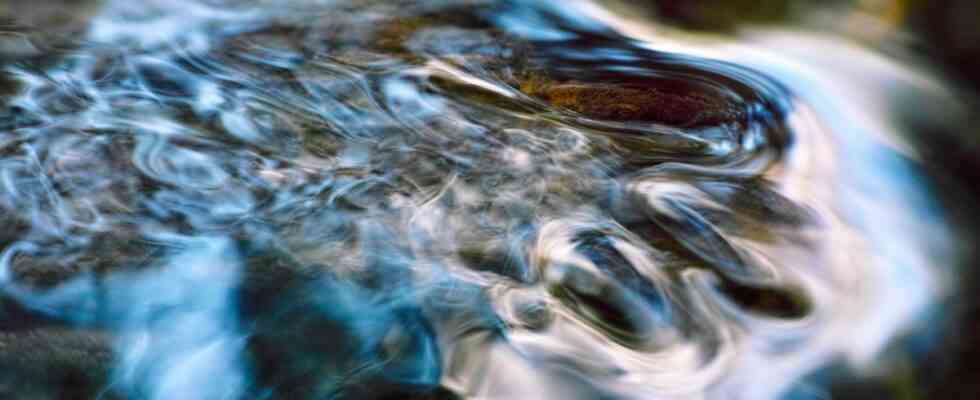Where the Würm winds its way through the Mühltal, nestled between high forested hills, are the photo motifs by Hans Karuga. Depending on the season, the trees on both sides of the river form a dense or sparse canopy of leaves over the river, its colors change from soft green to yellow to autumn orange, the sunlight breaks its way through to the surface of the water. That’s where it “clicks”. It is this interface, where light meets the moving water surface, that Hans Karuga captures with the camera when he presses the shutter button. This is how completely abstract, fantastic-looking plays of light are created. They can currently be seen in the “Reflections” exhibition in the foyer of the Max Planck Institute for Biochemistry in Martinsried.
In the pictures, colors run into each other like emulsions
The pandemic has often re-enacted the obvious. In the first lockdown, Hans Karuga, lighting designer from Weßling, discovered the Würm for himself and has returned to the river again and again over the past two and a half years to take pictures. For professional reasons he is fascinated by light. In his photography he goes on a journey of discovery, wants to know what can be achieved when light meets water.
It is a spectacle that is presented, a stage that opens, where light and water enter into a dance. And this changes at exactly the same location, depending on the season, depending on the incidence of light. Karuga shows this in a whole series of photos around a branch lying in the water. The camera is always in the same position, at the same time of day, but light, water and reflections are always in new formations. It is a “cosmos” of recordings that is created, says Karuga. “I slowly worked my way there, experimented a lot.”
For his work, Karuga positions his camera just above the water surface.
(Photo: Hans Karuga)
Hans Karuga prefers light luggage on his walks along the banks of the Würm. A handy tripod, a small camera, a macro lens. He dares to set up the camera directly in the water, to position the lens just above the moving water surface, he wants to get really close. He creates his abstract works of art with a triad of exposure time, aperture and camera position. Nature can only be guessed at. Sometimes it is algae, sometimes structures of a trunk or leaves that are recognizable. But more than that, nature provides the palette of materiality and the color box from which Karuga uses.
The camera fixes what the naked eye cannot see.
(Photo: Hans Karuga)
Karuga often doesn’t know in advance exactly what will happen when he presses the shutter button. The camera fixes what the naked eye cannot see. Only at home on the screen does he see what the photo lens does with the light. Then colors run into each other like emulsions, what shines through under the water surface or is reflected on the water surface can no longer be separated, cloudy veils appear like rising smoke. In the series “Lichtertanz im Wasserfall 1” light reflections become scribbles, as if the roaring water were guiding a drawing pen, leaving wild random squiggles on the water’s surface. A natural event is abstracted down to the sketch. And sometimes it seems as if a bear is looking out of the raging water – or is there Undine, as the picture title suggests? Karuga’s pictures invite you to see nature differently, to rediscover it.
The exhibition can be seen until February 24, Monday to Friday from 8 a.m. to midnight, Saturday and Sunday until 8 p.m., Max Planck Institute, Am Klopferspitz 18, Martinsried. Admission is free.

